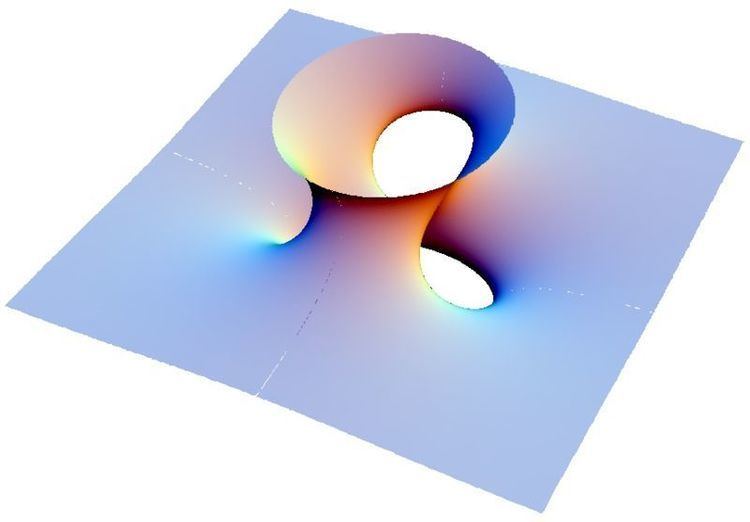 | ||
In mathematics, the mean curvature
Contents
- Definition
- Surfaces in 3D space
- Implicit form of mean curvature
- Mean curvature in fluid mechanics
- Minimal surfaces
- CMC surfaces
- References
The concept was introduced by Sophie Germain in her work on elasticity theory. It is important in the analysis of minimal surfaces, which have mean curvature zero, and in the analysis of physical interfaces between fluids (such as soap films) which by the Young–Laplace equation have constant mean curvature.
Definition
Let
The mean curvature at
By applying Euler's theorem, this is equal to the average of the principal curvatures (Spivak 1999, Volume 3, Chapter 2):
More generally (Spivak 1999, Volume 4, Chapter 7), for a hypersurface
More abstractly, the mean curvature is the trace of the second fundamental form divided by n (or equivalently, the shape operator).
Additionally, the mean curvature
using the Gauss-Weingarten relations, where
A surface is a minimal surface if and only if the mean curvature is zero. Furthermore, a surface which evolves under the mean curvature of the surface
The sphere is the only embedded surface of constant positive mean curvature without boundary or singularities. However, the result is not true when the condition "embedded surface" is weakened to "immersed surface".
Surfaces in 3D space
For a surface defined in 3D space, the mean curvature is related to a unit normal of the surface:
where the normal chosen affects the sign of the curvature. The sign of the curvature depends on the choice of normal: the curvature is positive if the surface curves "towards" the normal. The formula above holds for surfaces in 3D space defined in any manner, as long as the divergence of the unit normal may be calculated. Mean Curvature may also be calculated
where I and II denote first and second quadratic form matrices, respectively.
For the special case of a surface defined as a function of two coordinates, e.g.
In particular at a point where
If the surface is additionally known to be axisymmetric with
where
Implicit form of mean curvature
The mean curvature of a surface specified by an implicit equation
The mean curvature is given by:
Another form is as the divergence of the unit normal. A unit normal is given by
Mean curvature in fluid mechanics
An alternate definition is occasionally used in fluid mechanics to avoid factors of two:
This results in the pressure according to the Young-Laplace equation inside an equilibrium spherical droplet being surface tension times
Minimal surfaces
A minimal surface is a surface which has zero mean curvature at all points. Classic examples include the catenoid, helicoid and Enneper surface. Recent discoveries include Costa's minimal surface and the Gyroid.
CMC surfaces
An extension of the idea of a minimal surface are surfaces of constant mean curvature. The surfaces of unit constant mean curvature in hyperbolic space are called Bryant surfaces.
